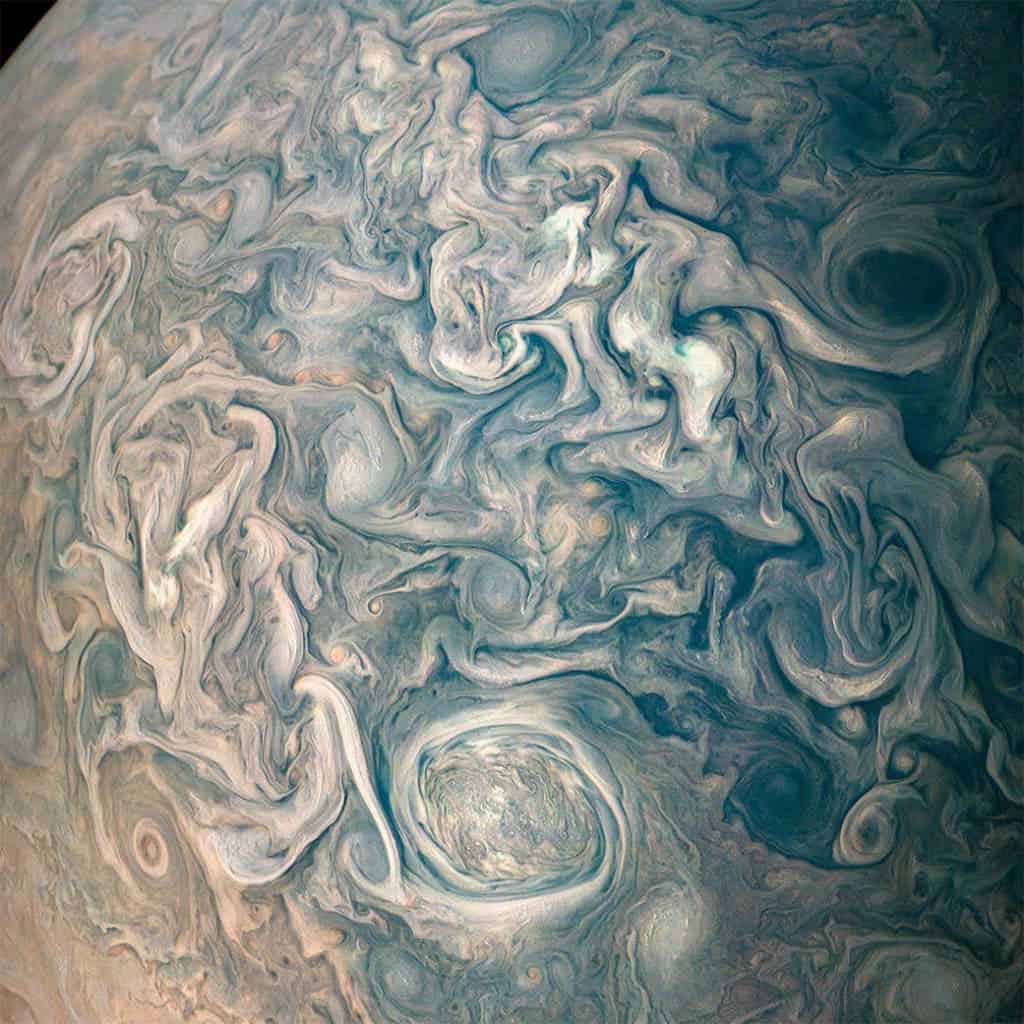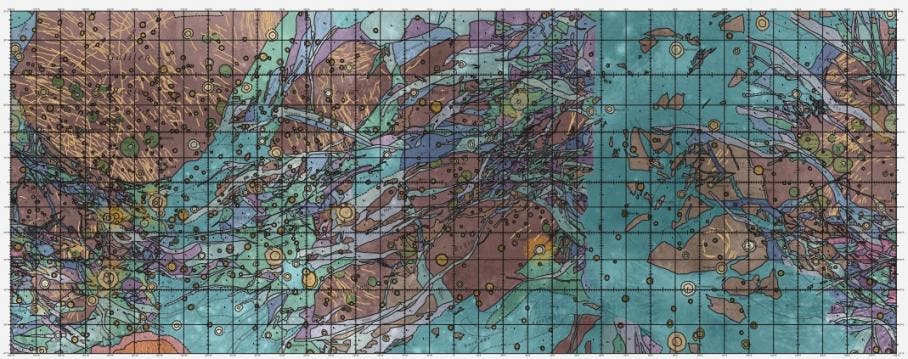This swirling pattern of color isn’t some long-lost Van Gogh oil painting — it’s Jupiter and the tumultuous vortices that dot its northern hemisphere.

The picture was snapped by the Juno spacecraft on May 23, 2018, during the spacecraft’s 13th close flyby of Jupiter. At the time, Juno was about 9,600 miles from the planet’s cloud tops.
According to NASA, the darker clouds are found deeper in the Jovian planet’s atmosphere while the bright clouds are found higher up into the atmosphere. These bright clouds are likely made of ammonia or ammonia and water, mixed with some yet unknown chemical ingredients. The bright oval at the bottom center of the picture — the one which resembles a cosmic eye — appears uniformly white to ground-based telescopes. From very close, however, we can resolve fine-scale features within the weather system. Just like in the case of Jupiter’s Great Red Spot, winds probably slow down greatly toward the center, where there doesn’t seem to be that much motion compared to the exterior of the eye.
Remarkably, the image was not processed by NASA. Citizen scientists Gerald Eichstädt and Seán Doran were responsible for the final image, who used data from the spacecraft’s JunoCam imager. Check out more pictures like this along with unprocessed data that anyone can use at the Juno Mission homepage.
This month, Juno was supposed to reach the climax of its mission by diving into the gas giant. NASA, however, decided to offer a three-year extension to the mission which means more opportunities for both science and eye candy such as the view feature here. Juno’s end of prime operations is now expected in July 2021, with data analysis and mission close-out activities continuing into 2022.
“This is great news for planetary exploration as well as for the Juno team,” said Scott Bolton, principal investigator of Juno, from the Southwest Research Institute in San Antonio. “These updated plans for Juno will allow it to complete its primary science goals. As a bonus, the larger orbits allow us to further explore the far reaches of the Jovian magnetosphere — the region of space dominated by Jupiter’s magnetic field — including the far magnetotail, the southern magnetosphere, and the magnetospheric boundary region called the magnetopause.”
“We have also found Jupiter’s radiation environment in this orbit to be less extreme than expected, which has been beneficial to not only our spacecraft, but our instruments and the continued quality of science data collected.”






